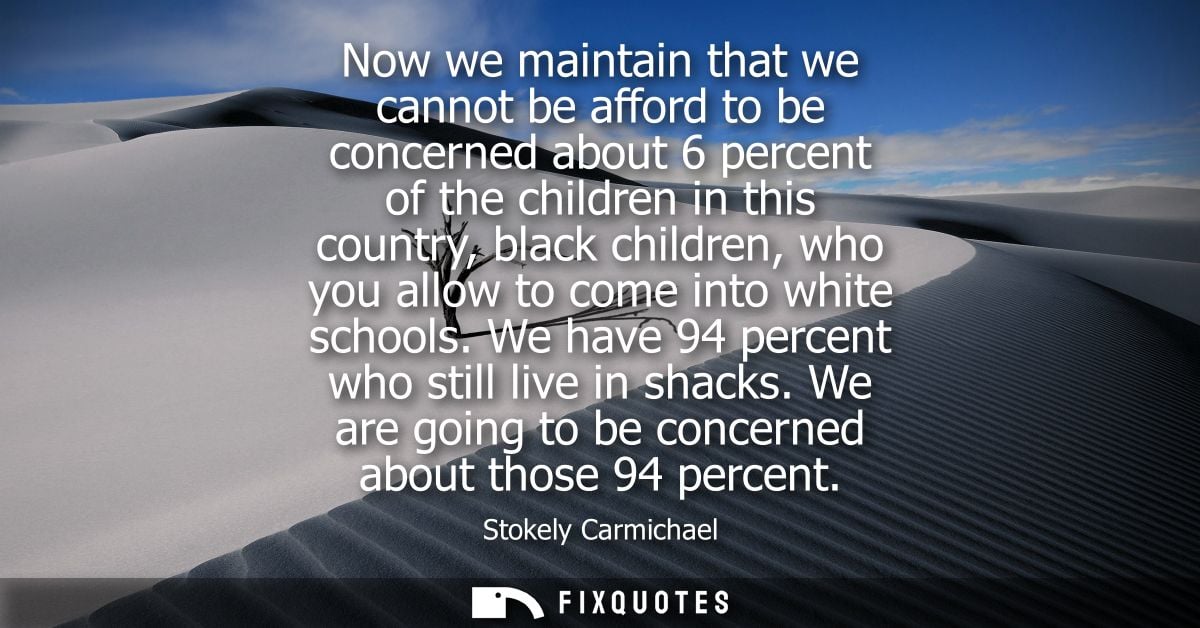"Now we maintain that we cannot be afford to be concerned about 6 percent of the children in this country, black children, who you allow to come into white schools. We have 94 percent who still live in shacks. We are going to be concerned about those 94 percent"
About this Quote
Stokely Carmichael’s statement challenges the limited scope of integrationist approaches to racial equality, specifically criticizing the focus on incorporating a small minority of Black children into predominantly white schools. He underscores the inadequacy and narrowness of placing the struggle for Black liberation within the context of school integration, which, at the time, was often touted as the primary battleground of the civil rights movement. Carmichael points out that only about 6 percent of Black children are considered in these integration efforts, insinuating that their placement in white schools is symbolically significant but practically insufficient for addressing the larger systemic issues that affect the Black community.
By drawing attention to the remaining 94 percent of Black children, who continue to reside in impoverished conditions, “still live in shacks”, Carmichael shifts the focus back to the majority who, despite the social and political energy expended on integration, experience little tangible improvement in their everyday lives. He critiques the idea that access to predominantly white educational institutions is a panacea for racial injustice, exposing how it leaves structures of poverty and segregation fundamentally unchallenged for most Black children.
Carmichael's remarks question the priorities of policymakers and civil rights leaders who may be content with incremental symbolic victories instead of transformative change. His advocacy suggests that the movement must address the root causes of racial inequity, poor housing, structural poverty, and systemic neglect, and prioritize the everyday realities of the vast majority. He implies that focusing on a select few who break through the color barrier in specific institutions does not equate to true justice or equality. Instead, the struggle should aim for a comprehensive uplift of the Black community, tackling issues that impact the overwhelming majority left behind by token measures of progress. Carmichael’s intervention calls for a redirection of energy from symbolic gestures to substantive changes that improve living conditions for all.
More details
About the Author

